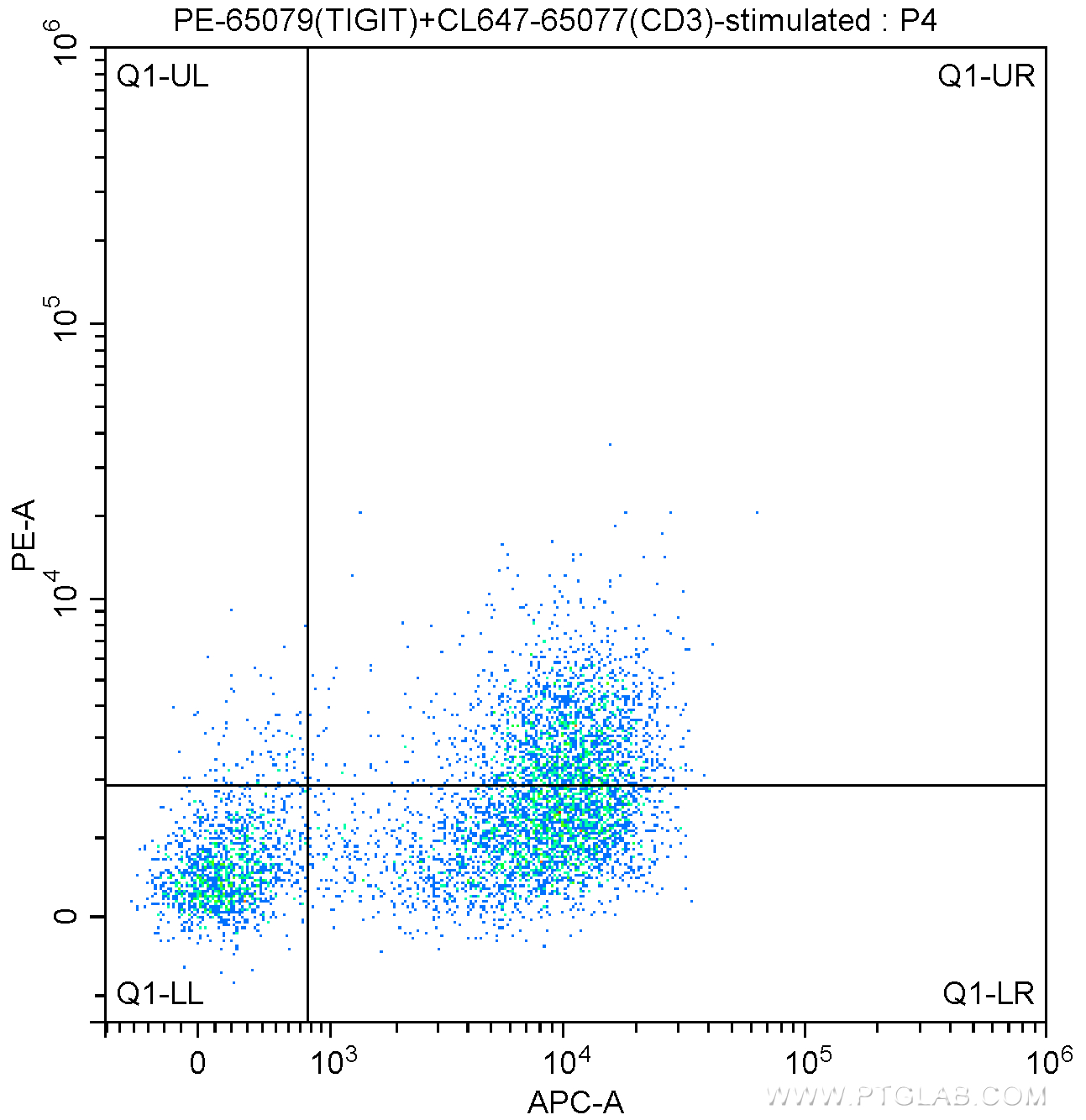验证数据展示
经过测试的应用
| Positive FC detected in | mouse splenocytes |
推荐稀释比
| 应用 | 推荐稀释比 |
|---|---|
| This reagent has been tested for flow cytometric analysis. It is recommended that this reagent should be titrated in each testing system to obtain optimal results. | |
| Sample-dependent, Check data in validation data gallery. | |
产品信息
PE-65079 targets TIGIT in FC applications and shows reactivity with Mouse samples.
| 经测试应用 | FC Application Description |
| 经测试反应性 | Mouse |
| 免疫原 | N/A 种属同源性预测 |
| 宿主/亚型 | Mouse / IgG1, kappa |
| 抗体类别 | Monoclonal |
| 产品类型 | Antibody |
| 全称 | T cell immunoreceptor with Ig and ITIM domains |
| 别名 | ENSMUSG00000071552, Tigit, Vstm3 |
| GenBank蛋白编号 | NM_001146325 |
| 基因名称 | Tigit |
| Gene ID (NCBI) | 100043314 |
| RRID | AB_2883875 |
| 偶联类型 | PE Fluorescent Dye |
| 最大激发/发射波长 | 496 nm, 565 nm / 578 nm |
| 形式 | Liquid |
| 纯化方式 | Affinity purification |
| UNIPROT ID | P86176 |
| 储存缓冲液 | PBS with 0.09% sodium azide and 0.1% gelatin , pH 7.2 |
| 储存条件 | Store at 2-8°C. Avoid exposure to light. Stable for one year after shipment. |
背景介绍
TIGIT (T-cell immunoreceptor with Ig and ITIM domains), also known as VSIG9 or VSTM3, is an immune receptor expressed on T cells, including Treg and memory subsets, as well as on NK cells (PMID: 19011627). It contains an immunoglobulin variable domain, a transmembrane domain and an immunoreceptor tyrosine-based inhibitory motif (ITIM). TIGIT binds to poliovirus receptor (PVR, also called CD155) with high affinity, and also to PVRL2 (CD112) with lower affinity. The interaction of TIGIT with PVR on dendritic cells increases the secretion of IL-10 and decreases the secretion of proinflammatory cytokine and suppresses T-cell activation by promoting the generation of mature immunoregulatory dendritic cells. TIGIT can inhibit NK cytotoxicity directly through its ITIM (PMID: 19815499).
实验方案
| Product Specific Protocols | |
|---|---|
| FC protocol for PE TIGIT antibody PE-65079 | Download protocol |
| Standard Protocols | |
|---|---|
| Click here to view our Standard Protocols |

